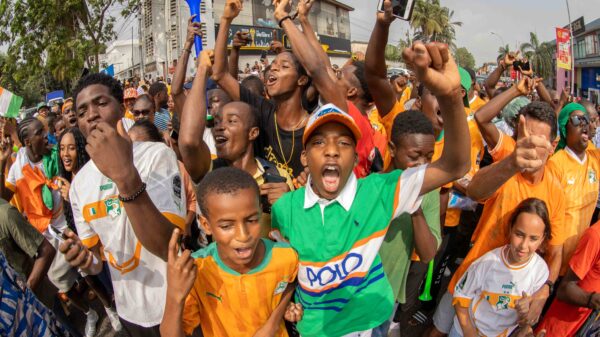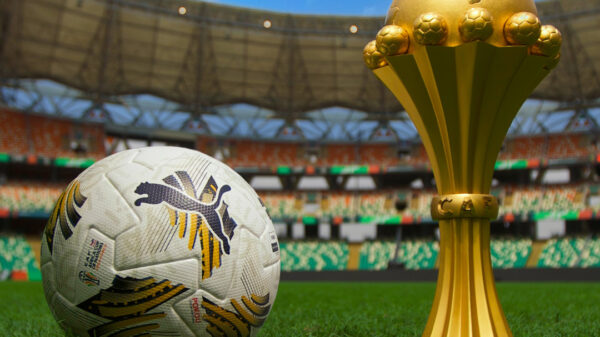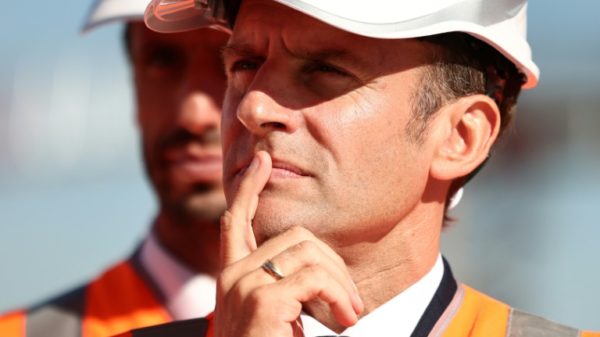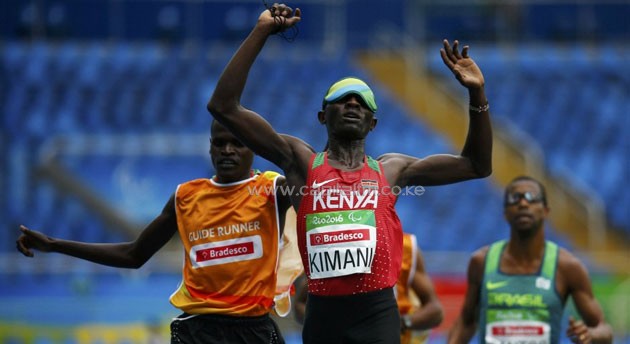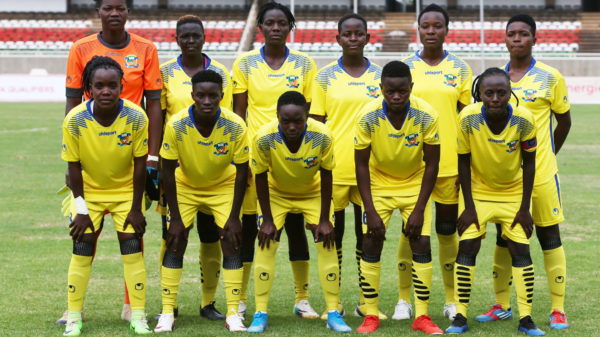
Construction of the 45,000-seat Volgograd Arena began in November 2014 © AFP / Mladen ANTONOV
VOLGOGORAD, Russian Federation, Nov 27 – First they dug up the bones and defused the bombs.
Then Russia erected a light-as-air stadium for the 2018 World Cup that rises from the ground around which two million people died over 200 days in the Battle of Stalingrad — the tragic turning point of World War II.
“Every millimetre of this soil is soaked in blood,” Volgograd Governor Andrei Bocharov said in an interview.
“There is not a single family living here today — not a single one — that has not lost someone.”
Bocharov and the million people who live in the city now known as Volgograd hope the fans from all over the world who descend on the scene of one of history’s darkest episodes will brighten their haunted lives.
– Fresh WWII graves –

The Volgograd Arena rests on the bank of the Volga river and bears a striking resemblance to the futuristic Bird’s Nest Stadium at the heart of the 2008 Summer Olympic Games in Beijing © AFP / Ruslan SHAMUKOV
The city of Stalingrad was renamed in 1961 after the Volga River that stretches along its banks.
The cult of personality built around Joseph Stalin was being dismantled and the city itself resurrected from the rubble left by carpet bombing and street combat that traumatised much of Europe.
Volgograd is still rising — as are the human remains and munitions from 75 years ago.
Construction of the 45,000-seat Volgograd Arena began in November 2014. Immediately, the remains of two bodies and 20 unexploded shells were discovered.
It did not come as a surprise: nearly every new building project in the city brings the discovery of World War II munitions and human bones.
“We first try to figure out their identity. This is not easy because a lot of time has passed. But at least we try to identify whether they belong to the Red Army or the Nazis,” Bocharov said.
“And then we decide where to bury them — on which side of the Rossoshka Memorial Cemetery.”
That grim memorial lies a 40-minute drive from the city and is a chilling sight.
At the cemetery, two sprawling fields, whose horizons are blurred by winter fog, are filled with mostly unidentified remains with Soviet soldiers to one side and their Nazi and Axis foes to the other.
Numerous plots are covered with freshly dug yellow sand from burials held just weeks or months ago. They form small hills above the frozen ground.
“For us, this is daily work,” the governor says.
– 2013 terror attacks –

The Volgograd Arena football stadium (R), seen while under construction for the upcoming 2018 FIFA World Cup, with the statue of Mother Homeland seen in the foreground © AFP/File / Ruslan SHAMUKOV
Dim echoes of the 1942-1943 horrors returned to Volgograd in 2013 as the city fell victim to a string of terror attacks linked to North Caucasus jihadists who killed 39 people.
A bombing that targeted a city bus claimed seven lives on October 21. Worse was to come when the main railroad station was hit on December 29 and a trolley bus the subsequent day.
But Volgograd Mayor Andrei Kosolapov said the strikes ultimately made the city safer by spurring the security services into action.
“All the sports facilities have been put on a permanent state of heightened alert,” the mayor told AFP.
Kosolapov said police dogs sniff every bus and train car for potential explosive devices daily. Metal detectors are ubiquitous.
“Plus, we have installed and are continuing to install video camera where — online — we can monitor every single street.”
“We have enormous experience in averting terror attacks.”
– Russian Bird’s Nest –

A musician plays accordion at a restaurant in Volgograd © AFP / Mladen ANTONOV
The football arena itself rests on the bank of the Volga and bears a striking resemblance to the futuristic Bird’s Nest Stadium at the heart of the 2008 Summer Olympic Games in Beijing.
Chief engineer Viktor Baturo walks around the stadium with pride because all the work has effectively been done. A few licks of paint and completion of the edge of the dome protecting fans from the rain is all that remains to be done.
“You can essentially play football here now,” he said with a wave of his hand at the bright-green pitch.
The stadium cost $270 million (230 million euros) — the exact budget allotted by Russian President Vladimir Putin.
“You just try exceeding the federal budget these days,” Baturo told AFP with a grin.
But it seems that results on the pitch are of secondary importance to natives of a land of such devastation.
“We want people not only to visit, but to come back again,” mayor Kosolapov said.
“That would be our real World Cup legacy. And we are working very hard.”







